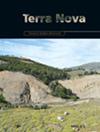早白垩世安第斯山脉北部不连续弧后地形的沉积物物源信号
IF 1.7
3区 地球科学
Q2 GEOSCIENCES, MULTIDISCIPLINARY
引用次数: 0
摘要
碎屑锆石U–Pb年龄的大型数据集(N = 5940)表明,这些岩石来源于安第斯原科迪勒拉山脉的元古代克拉通和二叠纪-三叠纪至白垩纪岩石。阿普特阶-阿尔比阶地层与Garzón地块的元古代岩石之间的不一致性表明该地区存在正起伏。地形高点可能导致局部盆地划分和同时代地层局部来源的普遍存在。正起伏区域似乎暴露在强烈的化学风化中,这是由分析地层的高化学蚀变指数值和低Rb/Sr和SiO2/Al2O3比率所表明的。我们的研究结果突出了物源分析在研究弧后系统古代地形方面的价值,并为进一步研究伸展构造在安第斯山脉地形和盆地演化中的作用开辟了途径。本文章由计算机程序翻译,如有差异,请以英文原文为准。
Sediment provenance signal of the discontinuous retroarc topography in the northern Andes during the Early Cretaceous
A large dataset of detrital zircon U–Pb ages (N = 5940) of Aptian‐Albian strata of the Colombian‐Ecuadorian retroarc region suggests that these rocks were sourced from Proterozoic cratonic and Permian–Triassic to Cretaceous rocks of the Andean proto‐Cordilleras. The nonconformity between Aptian‐Albian strata and Proterozoic rocks of the Garzón Massif indicates the existence of positive relief in this region. Topographic highs could have caused local basin compartmentalization and the prevalence of a localized provenance of coeval strata. Areas of positive relief were seemingly exposed to intense chemical weathering as suggested by the high Chemical Index of Alteration values, and low Rb/Sr and SiO2/Al2O3 ratios of analysed strata. Our results highlight the value of provenance analysis to study the ancient topography of retroarc systems and open the avenue for further research on the role of extensional tectonics in the topographic and basin evolution in the Andes.
求助全文
通过发布文献求助,成功后即可免费获取论文全文。
去求助
来源期刊

Terra Nova
地学-地球科学综合
CiteScore
4.80
自引率
8.30%
发文量
59
审稿时长
2.3 months
期刊介绍:
Terra Nova publishes short, innovative and provocative papers of interest to a wide readership and covering the broadest spectrum of the Solid Earth and Planetary Sciences. Terra Nova encompasses geology, geophysics and geochemistry, and extends to the fluid envelopes (atmosphere, ocean, environment) whenever coupling with the Solid Earth is involved.
 求助内容:
求助内容: 应助结果提醒方式:
应助结果提醒方式:


